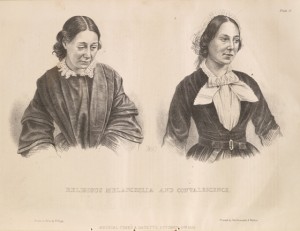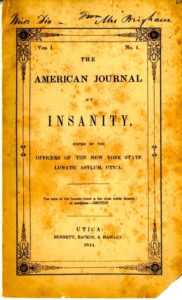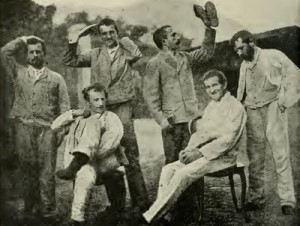Their own writings provide fascinating insights into the mental health profession’s ever-changing understanding of insanity and how to treat it. Although it was not the only vehicle by which to express current thoughts on the topic, the American Journal of Insanity did have the backing of many authorities in the field. Articles in it ranged from purely practical matters to theoretical speculation concerning the root causes of insanity. My next few posts will give a sampling of what was on the minds of leading alienists in the nineteenth and early twentieth centuries.
In 1863, Dr. John Bucknill wrote an article, “Modes of Death Prevalent Among Insane,” in which he advocated consistency in the way asylum superintendents registered cause of death. Bucknill found that the term exhaustion served as a catchall word that gave little clue as to the actual disease or condition that took a patient’s life. Reading from asylum obituary tables, Bucknill noted that at one asylum a physician attributed 30% of deaths to exhaustion. “In another report, I find a number of deaths attributed to ‘prostration,’ which is perhaps a synonym for exhaustion; while in another report the terms ‘gradual decay’ or ‘general decay’ appear often to be used to express the same facts.”
The vagueness of words like exhaustion and decay kept asylum physicians from keeping accurate records concerning causes of death among their patients. Bucknill urged physicians to give the names of the disease that killed their patients, and then simply add the precise mechanism that shut them down if they wished. Bucknill gave an example of a patient who died from refusing food because of his delusions. Under the system he currently saw, doctors would say the person died of exhaustion, but Bucknill urged, instead: “Let us say that the patient died of acute mania, or acute melancholia, adding, if we think fit, that the mode of death was anemic syncope from refusal of food.”
Though Bucknill’s concerns might seem trivial today, he was part of a movement to bring consistency and order to a field which had little science or tradition behind it. Because psychiatry was a new field, early practitioners had to hammer out details on such fundamental issues as how to build insane asylums, what to call them, and then how to classify the illnesses they saw within their walls. Actual therapeutic treatment was then another huge issue.

Religious Melancholia and Convalescence, from John Conolly's book, Physionomy of Insanity, 1858, courtesy Brown University
______________________________________________________________________________________

